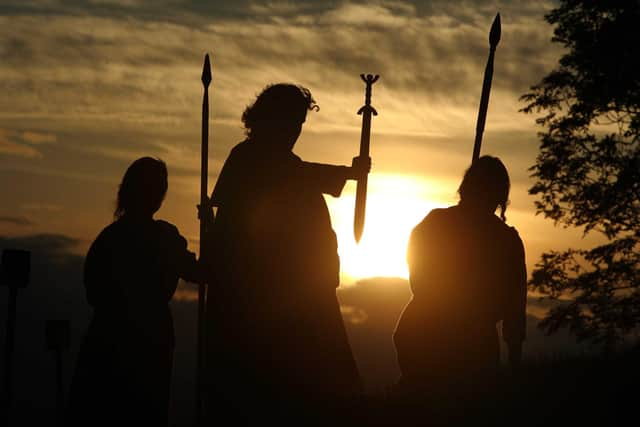Winter solstice: Sun to set in Derry/Donegal at 4.02pm on 'An Grianstad' - 'the birthday of the sun'
and live on Freeview channel 276
Tomorrow, the city will enjoy an extra minute of daylight, with the sun forecast to recede at three minutes past four: a quare stretch!
The solstice is a major event in the astronomical calendar and occurs when the sun 'stops' immediately above the equator between the Northern and Southern Hemisphere.
Advertisement
Hide AdAdvertisement
Hide AdIn Irish, the event is known as grianstad an gheimhridh (the sun stop of winter) and was once known colloquially as the 'birthday of the sun', according to several entries to UCD's Schools Collection, a collection of folklore compiled by schoolchildren in Ireland in the 1930s.


For millennia and until recent times it was marked by the burning of a 'yule' log - yule being the Germanic name for the winter festival elsewhere in Europe.
So important was the occasion that over 5000 years ago our ancestors fashioned the Newgrange passage tomb at Brú na Bóinne in County Meath as an incredible monument to the sun.
Such was their geometric awareness and knowledge of the heavens that it was engineered in such a way that at dawn on December 21, a shaft of light illuminates its passage and chamber for precisely 17 minutes.
Advertisement
Hide AdAdvertisement
Hide AdWhile Newgrange is the best known example of such sun worship, the Beaghmore Stone Circles, not far south of Park and Draperstown in the Sperrins, is believed to have served a similar purpose.
The complex - which has been dated to between 2900 and 2600BC - was excavated in the 1940s and 1960s.
Researchers at the QUB Centre for Climate, the Environment and Chronology (Chrono) have noted: "The site could mark a focal point for religious and/or social gatherings. Some archaeologists conclude that the circles have been constructed in relation to the rising of the sun at the solstice, or to record the movements of the sun and moon acting as observatories for particular lunar, solar or stellar events.
"Three of the stone rows point to the sunrise at the time of the solstice and another is aligned towards moonrise at the same period. However, most of the remains at Beaghmore do not indicate very accurate alignments upon specific astronomical features."
